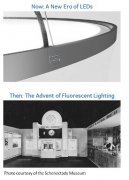Korea, Japan, and China appear to LED Maple Tree have the solutions to see steady and positive proliferation of LED lighting products, key price points could trigger real commercial demand.
“The rapid increase in the market for LEDs used in various applications such as notebook backlights and automobile headlights is spurring heavy capital investments by LED makers”, noted Robert Castellano, president of The Information Network. “LEDs are creating a niche market for conventional suppliers of semiconductor processing tools and a lucrative market for MOCVD LED Maple Tree suppliers.”
High brightness LEDs will reach nearly 135 billion units shipped in 2011 from less than 100 billion in 2010. Backlight LEDs will reach 30 billion units shipped, up from 20 billion in 2010.
The South Korean government launched a new LED lighting adoption program last month as part of its national energy-saving program. The program aims at achieving 100% adoption rate for LED lighting in the Korean public LED Maple Tree sector and 60% penetration of all lighting applications nationwide by 2020. The government will fund $185 million in 2012 and 2013 to support energy-efficiency rebates.
South Korea’s Samsung and LG have a broad range of LED lighting products for the domestic market and highly competitive pricing strategies; Samsung already has a 60-watt equivalent LED light bulb priced at less than $20.
In Japan, sales volume LED light bulbs have already reached an adoption rate of more than 40% and are expected to exceed 50% in the second half of 2011.
In China, the Central Government’s objective is to end up with five to six major Chinese players, who can compete globally, including 3 to 5 flagship companies. The report says that not only will China become a powerhouse in LED Maple Tree low-cost manufacturing by 2015, it will also be the largest consumer of LEDs. Currently there are 50 large indoor and outdoor lighting projects already in place.
The Information Network says that the Chinese domestic SSL value will reach US$ 74bn by 2015 and that a business-to-government deal with central and local governments is imminent. Continued investments in the Chinese LED value chain between 2010 and 2015 will see 75% going into the supply chain and 25% into vertically integrated players.
By 2015, China intends for its manufacturing standards to be LED Maple Tree globally viable for the volume production market and its LED lighting products to be 40% below the market price.
Apart from their global commercial aspirations, they are also greatly motivated by the high potential internal benefits that will arise from having access to energy efficient lighting and consequently, LEDs are a very prominent target technology in China’s latest five-year plan.



